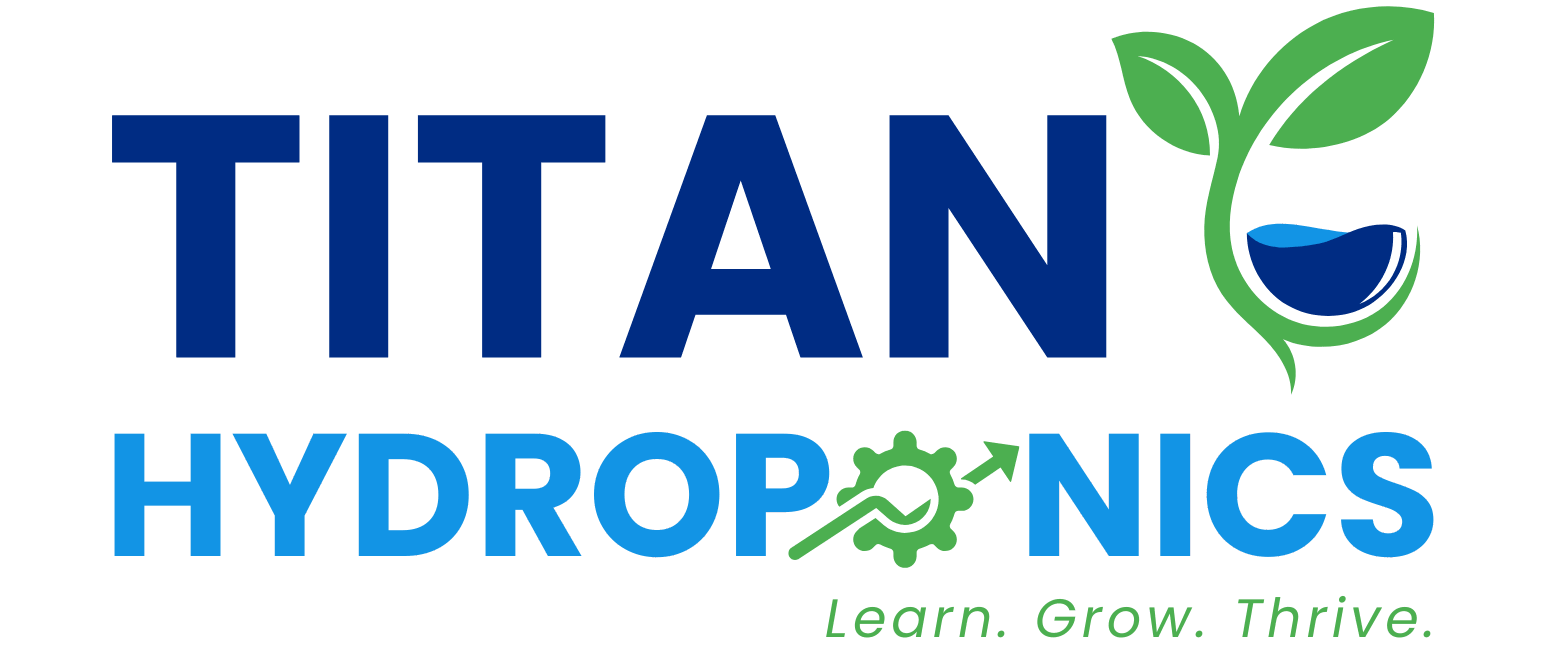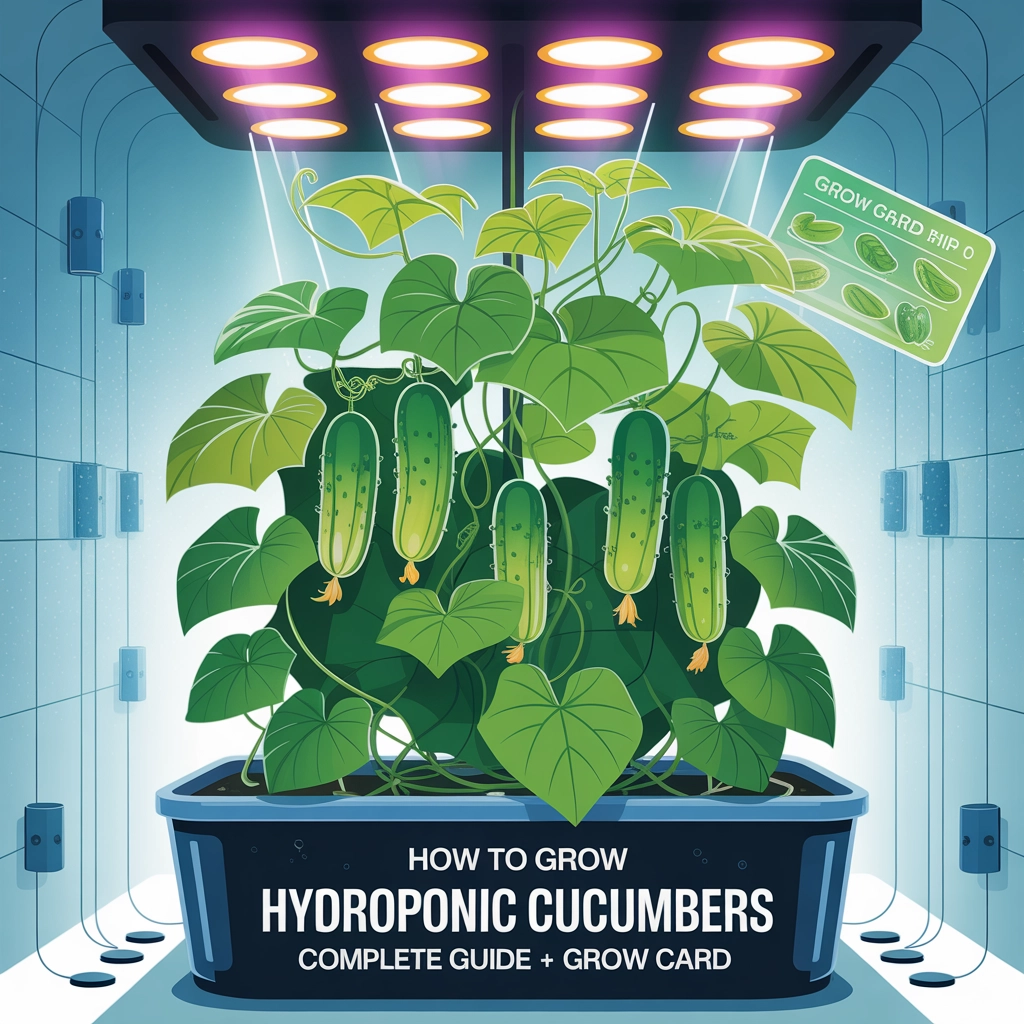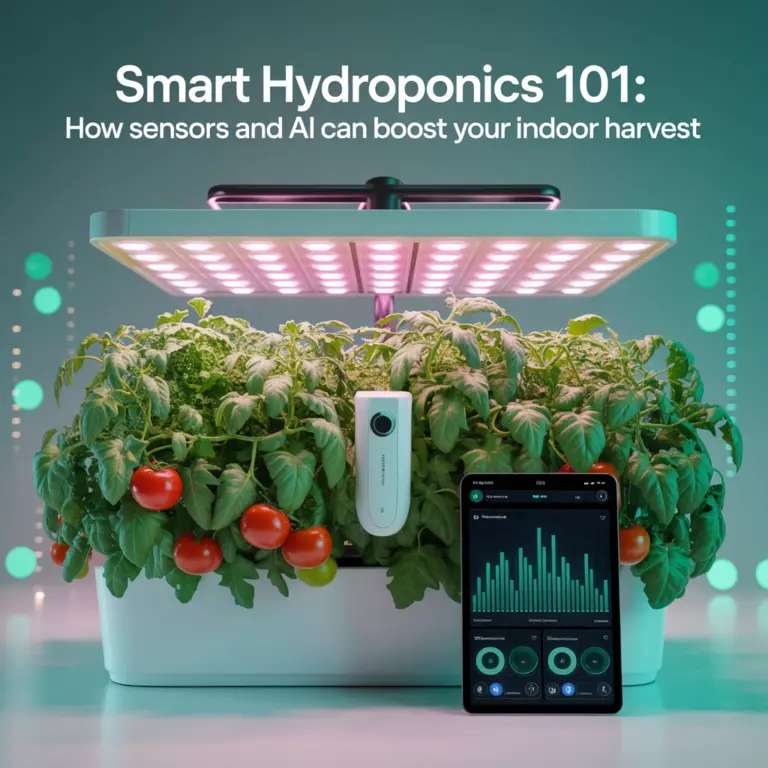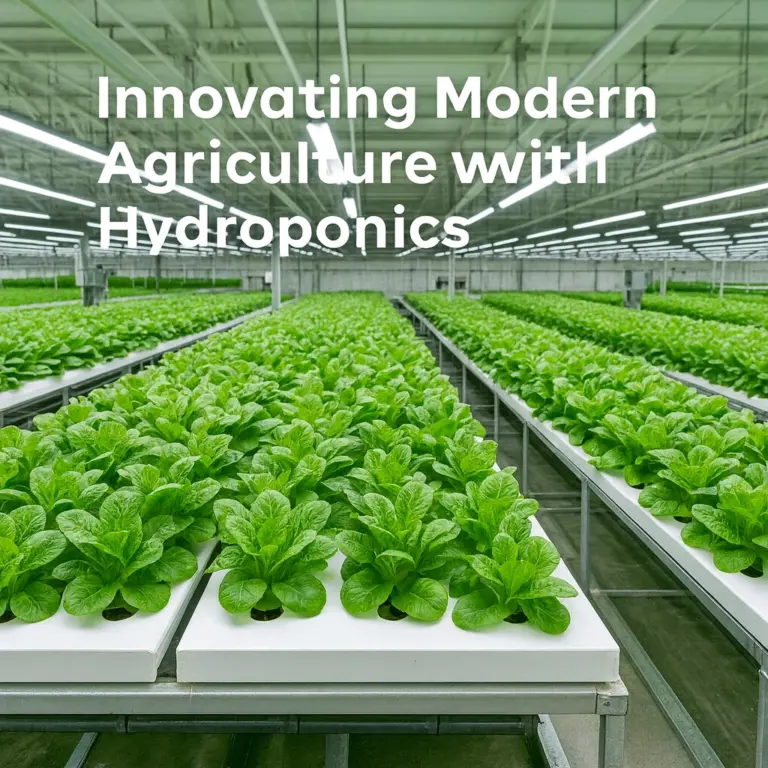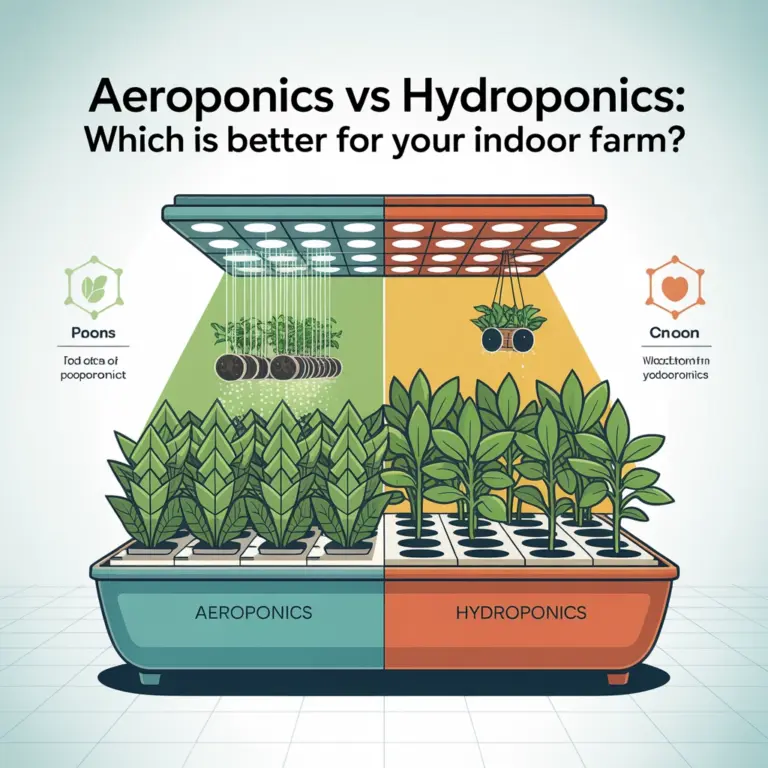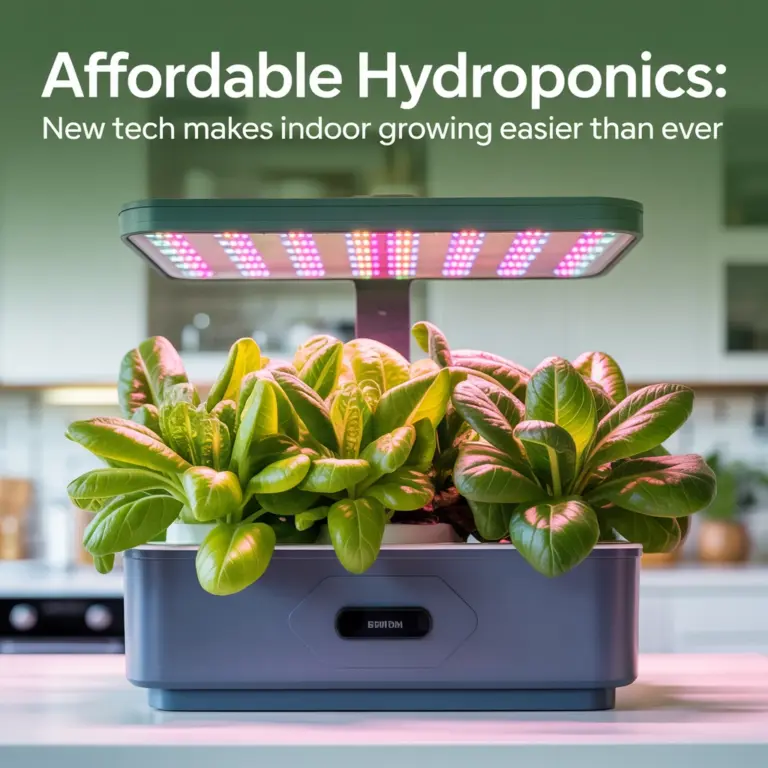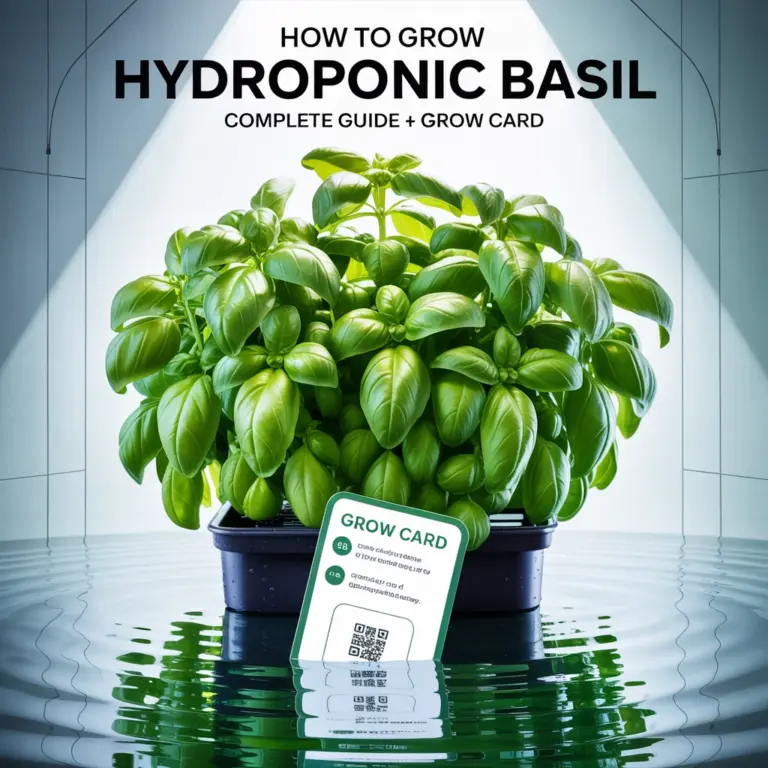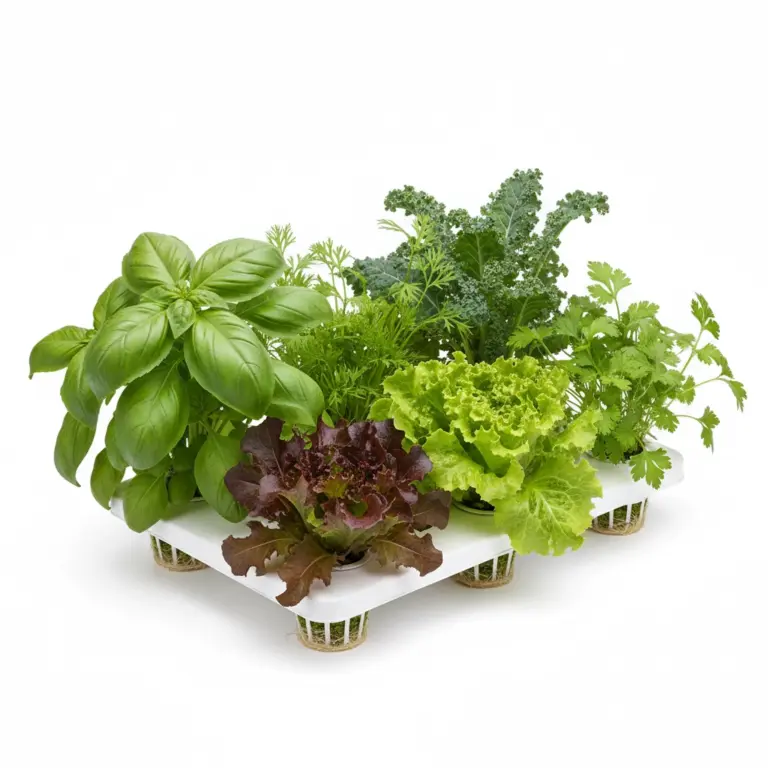How to Grow Hydroponic Cucumbers: Complete Guide + Grow Card
Growing cucumbers hydroponically is one of the most rewarding experiences you can have as an indoor farmer. These vining plants produce crisp, fresh cucumbers faster than traditional soil methods, and with the right setup, you can harvest them year-round. Whether you’re a complete beginner or looking to add cucumbers to your existing hydroponic garden, this guide will walk you through everything you need to know.
Why Grow Hydroponic Cucumbers?
Hydroponic cucumbers grow 30-50% faster than their soil counterparts and typically produce higher yields. You’ll have complete control over nutrients, water, and growing conditions, which means no soil-borne diseases, no weeds, and no guessing about what your plants need. Plus, you can grow them anywhere with proper lighting – from basements to spare bedrooms.
The biggest advantage? Fresh cucumbers whenever you want them. No more paying premium prices for store-bought cucumbers that traveled hundreds of miles to reach you.
Choosing Your Hydroponic System
Deep Water Culture (DWC) works exceptionally well for cucumbers. Your plants sit in net pots with their roots dangling into oxygenated nutrient solution. It’s simple, effective, and perfect for beginners.
Ebb and Flow systems are another excellent choice. These systems flood your grow tray with nutrients 4-6 times daily for about 15 minutes each time, then drain back to the reservoir. This gives roots access to both nutrients and oxygen.
NFT (Nutrient Film Technique) can work for cucumbers, but you’ll need a sturdy system since mature cucumber plants get heavy with fruit.
For beginners, we recommend starting with DWC – it’s foolproof and gives you the best learning experience.
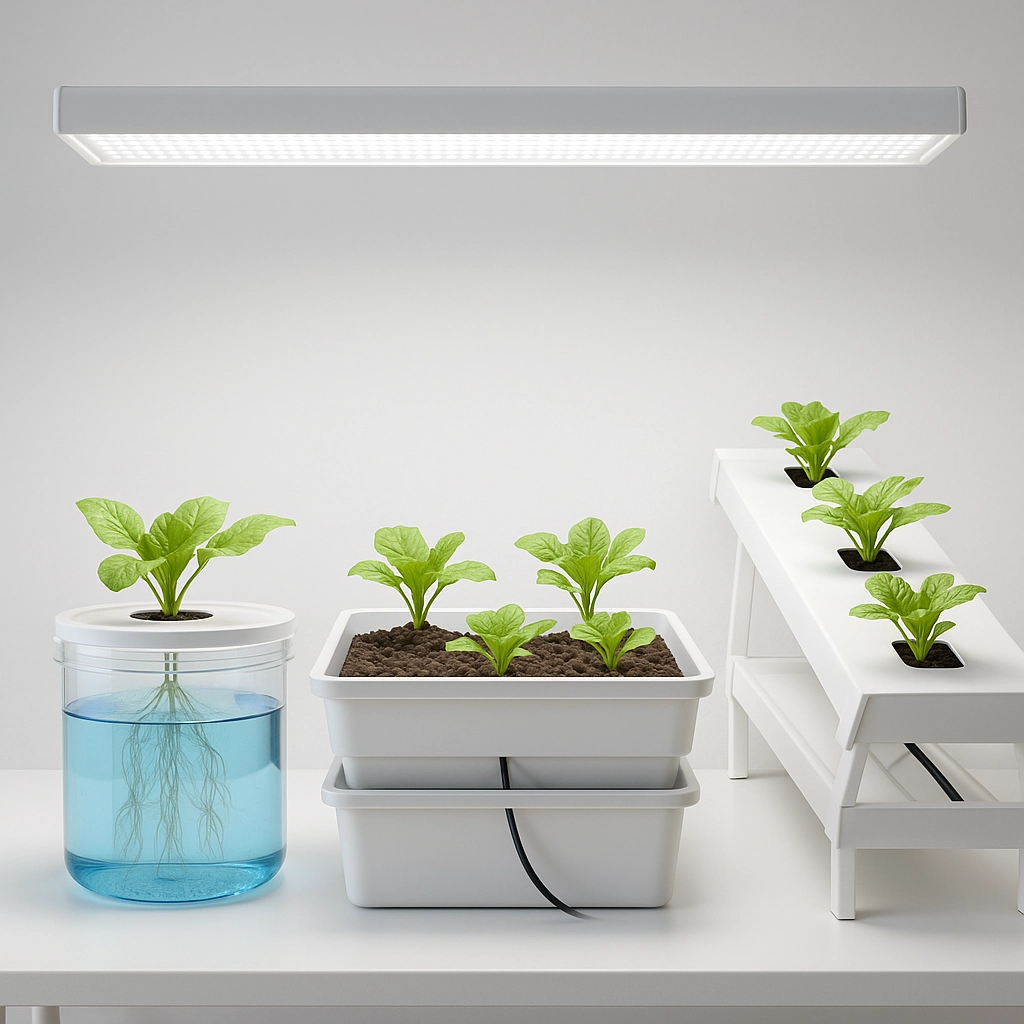
Environmental Requirements
Temperature Control
Keep daytime temperatures between 75-82°F (24-28°C) and nighttime temperatures around 65-70°F (18-21°C). Cucumbers are warm-weather plants, so consistent temperatures in this range will keep them happy and productive.
Humidity Management
Maintain humidity between 50-70%. Too high and you risk fungal problems; too low and your plants will stress. A simple hygrometer helps you monitor this easily.
Lighting Needs
Cucumbers need 14-16 hours of bright light daily. LED grow lights work best, providing 300-600 µmol/m²/s of light intensity. If you’re using natural sunlight, supplement with grow lights during shorter days.
Air Circulation
Install fans to keep air moving around your plants. Good airflow prevents fungal diseases and strengthens plant stems. Even a small oscillating fan makes a huge difference.
Getting Started: Setup and Planting
Seed Selection
Choose varieties suited for hydroponic growing. Parthenocarpic varieties (don’t need pollination) like ‘Suyo Long’, ‘Diva’, or ‘Socrates’ work great for beginners. These produce fruit without hand-pollination.
Starting Seeds
Start seeds in rockwool cubes or rapid rooter plugs. Keep them moist and warm (75-80°F) until germination, which typically takes 3-7 days. Once you see the first true leaves developing, they’re ready for your system.
Transplanting
Move seedlings to your hydroponic system when they have 3-4 true leaves, usually after 4-5 weeks. Handle roots gently – they’re delicate at this stage.
Spacing
Give each plant 2-3 feet of space in all directions. Cucumbers are vigorous growers and need room to spread. Overcrowding leads to poor air circulation and increased disease risk.
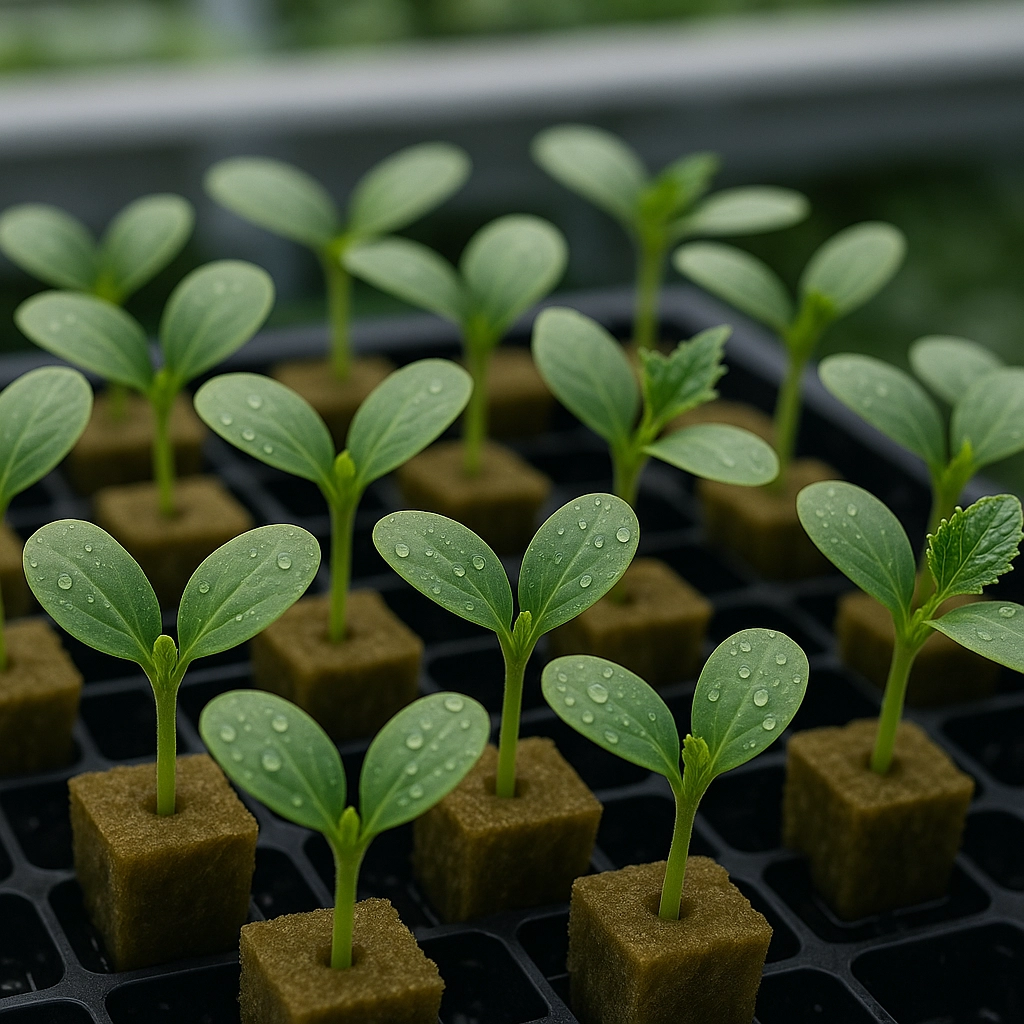
Nutrient Management
Use a quality hydroponic nutrient solution designed for fruiting plants. Cucumbers are heavy feeders, especially during fruit production.
Nutrient Schedule:
- Seedling stage: EC 0.8-1.2, pH 5.5-6.0
- Vegetative growth: EC 1.6-2.0, pH 5.5-6.5
- Flowering/fruiting: EC 2.0-2.4, pH 6.0-6.5
Check and adjust your nutrient solution weekly. Change it completely every 2-3 weeks to prevent nutrient imbalances.
pH Management
Cucumbers prefer slightly acidic to neutral pH (5.5-6.5). Check pH daily and adjust as needed using pH up or pH down solutions.
Plant Care and Maintenance
Training and Support
Cucumbers are vining plants that need support. Install trellises, stakes, or vertical growing systems. Train main stems upward and prune side shoots to focus energy on fruit production.
Pruning Techniques
Remove suckers (side shoots) that grow from leaf joints. Keep the bottom 12 inches of the plant clear of leaves to improve air circulation. Remove any yellowing or dead leaves immediately.
Hand Pollination
If growing traditional varieties, you’ll need to hand-pollinate. Use a small paintbrush to transfer pollen from male flowers (thin stems) to female flowers (small fruit at the base). Do this in the morning when pollen is most viable.
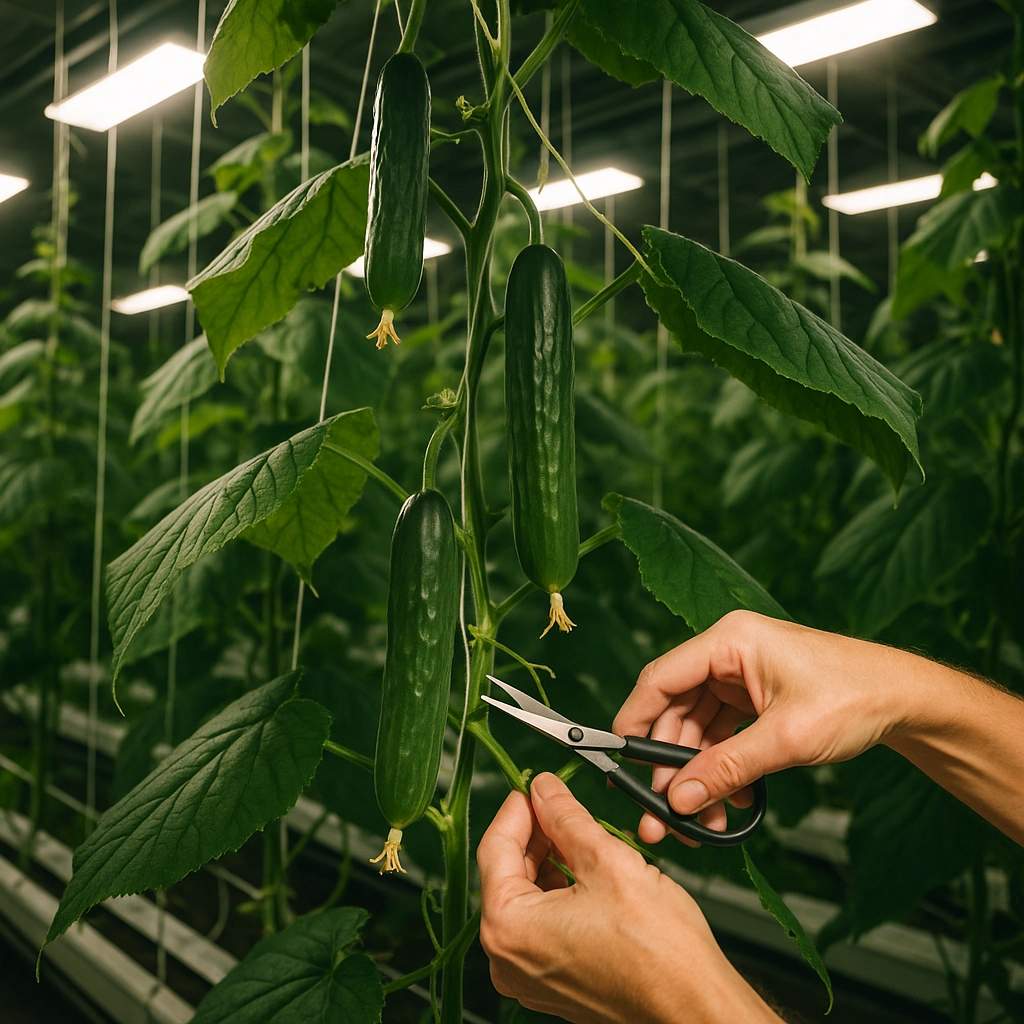
Troubleshooting Common Issues
Powdery Mildew
White, powdery spots on leaves indicate fungal problems. Improve air circulation, reduce humidity, and consider organic fungicides if severe.
Yellowing Leaves
Usually indicates nutrient deficiency or pH problems. Check your nutrient solution strength and pH levels. Bottom leaves naturally yellow as plants age.
Poor Fruit Set
Often caused by temperature stress, inadequate pollination, or nutrient imbalances. Ensure consistent temperatures and proper pollination techniques.
Bitter Cucumbers
Result from stress conditions like irregular watering, temperature fluctuations, or over-maturity. Maintain consistent growing conditions.
Wilting Plants
Check for root rot (brown, slimy roots), clogged air stones, or pump failures. Ensure proper oxygenation of your nutrient solution.
Harvesting Your Cucumbers
Most cucumber varieties are ready to harvest 50-70 days from transplanting. Harvest when fruits reach their intended size but before they turn yellow or become seedy.
Harvest Tips:
- Pick cucumbers every 2-3 days to encourage continued production
- Cut fruits with clean scissors or pruners – don’t pull them off
- Harvest in the morning when fruits are crisp and full of moisture
- Small, frequent harvests produce better quality than letting fruits get oversized
A healthy hydroponic cucumber plant can produce 15-20 pounds of fruit over a 3-4 month growing season.
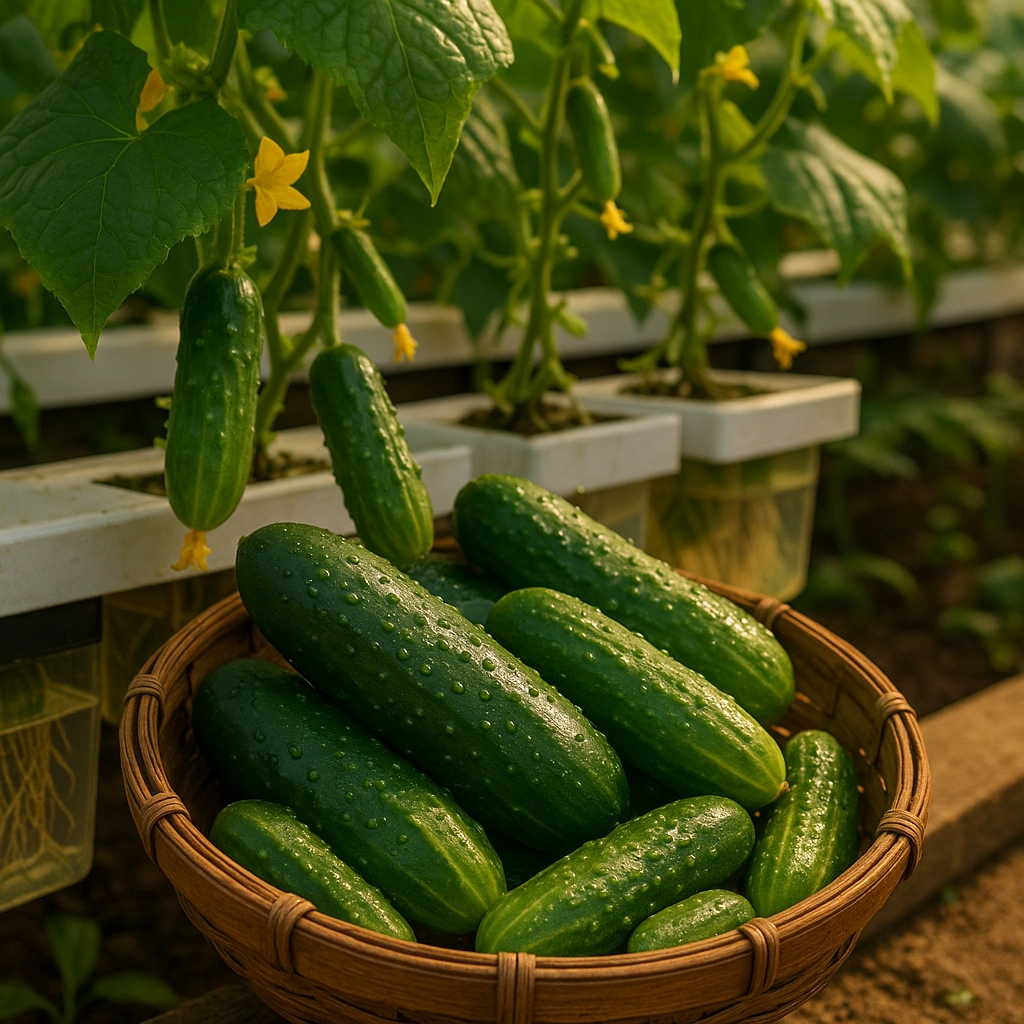
Advanced Tips for Maximum Production
Succession Planting
Start new plants every 4-6 weeks to maintain continuous harvests. This ensures you always have productive plants coming online.
CO2 Supplementation
If growing in a sealed environment, adding CO2 can boost production by 20-30%. Keep levels around 1000-1200 ppm during daylight hours.
Root Zone Heating
Maintain nutrient solution temperature at 65-68°F for optimal root function and nutrient uptake.
🥒 Hydroponic Cucumber Grow Card
System: DWC or Ebb & Flow
Transplant Age: 4-5 weeks (3-4 true leaves)
Spacing: 2-3 feet apart
Temperature: 75-82°F day / 65-70°F night
Humidity: 50-70%
Lighting: 14-16 hours daily, 300-600 µmol/m²/s
pH Range: 5.5-6.5
EC Range: 0.8-2.4 (depending on growth stage)
Harvest Time: 50-70 days from transplant
Weekly Tasks:
- Check and adjust pH/EC
- Remove suckers and yellowing leaves
- Train vines upward
- Hand-pollinate if needed
- Harvest mature fruits
Monthly Tasks:
- Complete nutrient solution change
- Deep clean system components
- Check all pumps and air stones
Growing hydroponic cucumbers successfully comes down to maintaining consistent conditions and staying on top of routine maintenance. With proper care, you’ll enjoy fresh, homegrown cucumbers that taste better than anything from the grocery store.
Join Our Community
Titan Hydroponics Scoop is your weekly pulse on hydroponics, fresh ideas, and community stories. From practical growing tips and grower highlights to news, inspiration, and sustainable living, we’re growing something special together—one story at a time.
